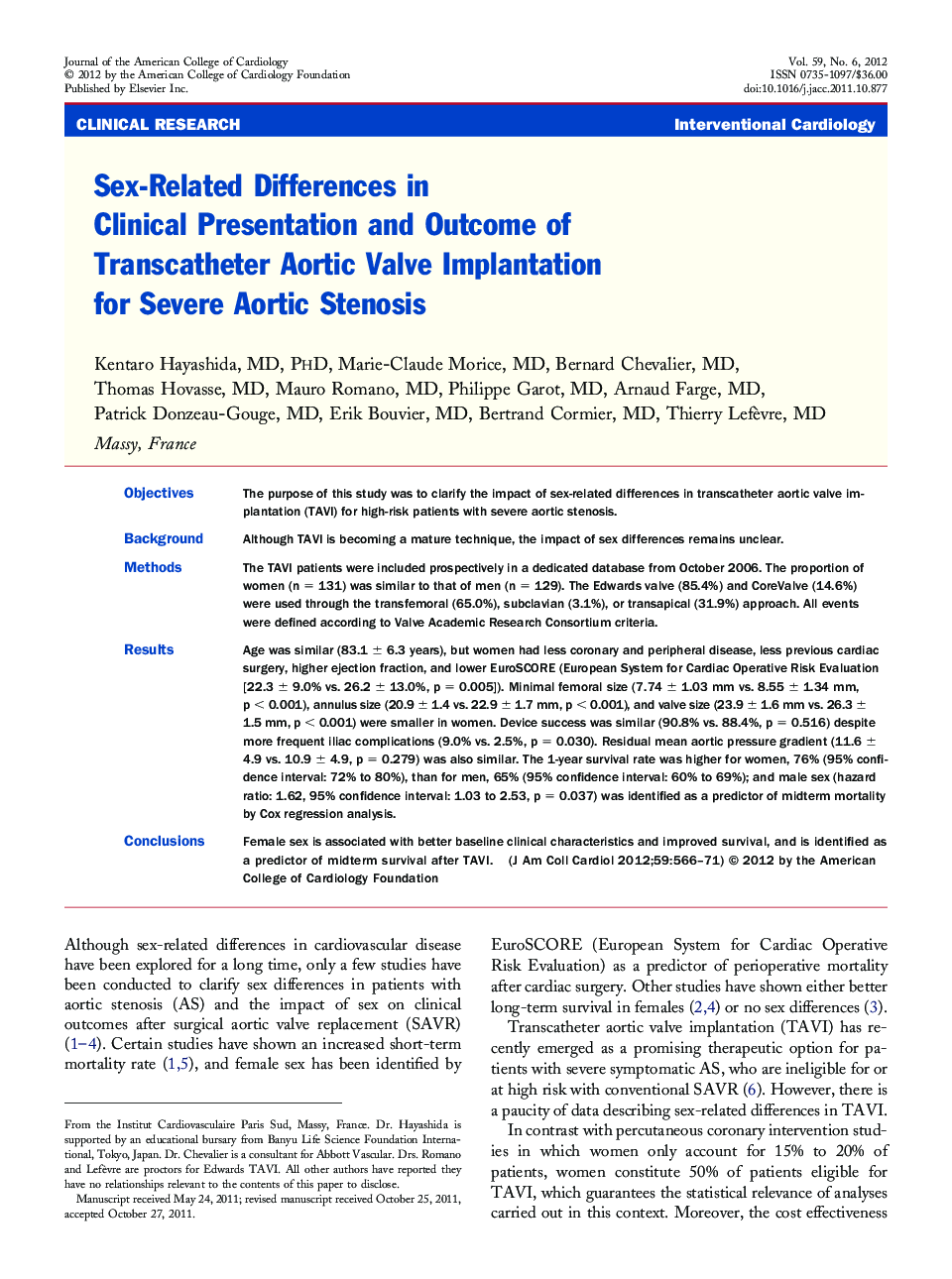| کد مقاله | کد نشریه | سال انتشار | مقاله انگلیسی | نسخه تمام متن |
|---|---|---|---|---|
| 2947548 | 1577226 | 2012 | 6 صفحه PDF | دانلود رایگان |

ObjectivesThe purpose of this study was to clarify the impact of sex-related differences in transcatheter aortic valve implantation (TAVI) for high-risk patients with severe aortic stenosis.BackgroundAlthough TAVI is becoming a mature technique, the impact of sex differences remains unclear.MethodsThe TAVI patients were included prospectively in a dedicated database from October 2006. The proportion of women (n = 131) was similar to that of men (n = 129). The Edwards valve (85.4%) and CoreValve (14.6%) were used through the transfemoral (65.0%), subclavian (3.1%), or transapical (31.9%) approach. All events were defined according to Valve Academic Research Consortium criteria.ResultsAge was similar (83.1 ± 6.3 years), but women had less coronary and peripheral disease, less previous cardiac surgery, higher ejection fraction, and lower EuroSCORE (European System for Cardiac Operative Risk Evaluation [22.3 ± 9.0% vs. 26.2 ± 13.0%, p = 0.005]). Minimal femoral size (7.74 ± 1.03 mm vs. 8.55 ± 1.34 mm, p < 0.001), annulus size (20.9 ± 1.4 vs. 22.9 ± 1.7 mm, p < 0.001), and valve size (23.9 ± 1.6 mm vs. 26.3 ± 1.5 mm, p < 0.001) were smaller in women. Device success was similar (90.8% vs. 88.4%, p = 0.516) despite more frequent iliac complications (9.0% vs. 2.5%, p = 0.030). Residual mean aortic pressure gradient (11.6 ± 4.9 vs. 10.9 ± 4.9, p = 0.279) was also similar. The 1-year survival rate was higher for women, 76% (95% confidence interval: 72% to 80%), than for men, 65% (95% confidence interval: 60% to 69%); and male sex (hazard ratio: 1.62, 95% confidence interval: 1.03 to 2.53, p = 0.037) was identified as a predictor of midterm mortality by Cox regression analysis.ConclusionsFemale sex is associated with better baseline clinical characteristics and improved survival, and is identified as a predictor of midterm survival after TAVI.
Journal: Journal of the American College of Cardiology - Volume 59, Issue 6, 7 February 2012, Pages 566–571